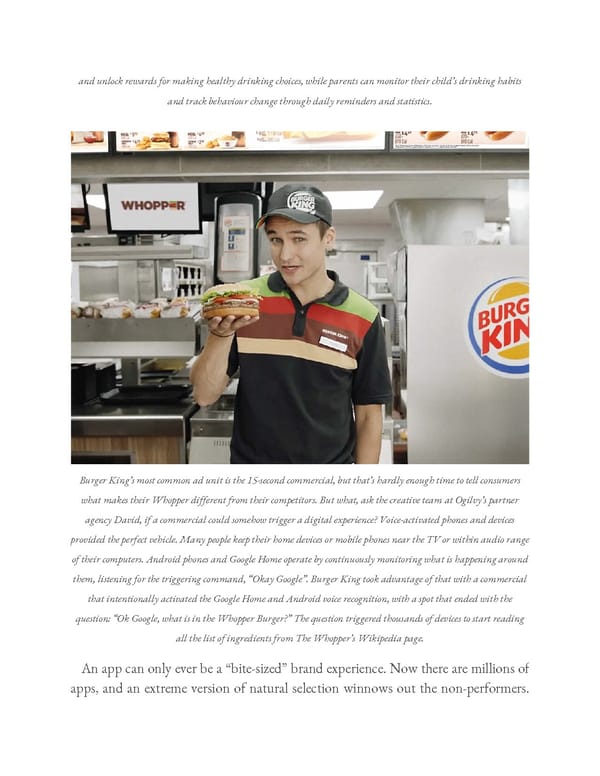and unlock rewards for making healthy drinking choices, while parents can monitor their child’s drinking habits and track behaviour change through daily reminders and statistics. Burger King’s most common ad unit is the 15-second commercial, but that’s hardly enough time to tell consumers what makes their Whopper different from their competitors. But what, ask the creative team at Ogilvy’s partner agency David, if a commercial could somehow trigger a digital experience? Voice-activated phones and devices provided the perfect vehicle. Many people keep their home devices or mobile phones near the TV or within audio range of their computers. Android phones and Google Home operate by continuously monitoring what is happening around them, listening for the triggering command, “Okay Google”. Burger King took advantage of that with a commercial that intentionally activated the Google Home and Android voice recognition, with a spot that ended with the question: “Ok Google, what is in the Whopper Burger?” The question triggered thousands of devices to start reading all the list of ingredients from The Whopper’s Wikipedia page. An app can only ever be a “bite-sized” brand experience. Now there are millions of apps, and an extreme version of natural selection winnows out the non-performers.
 Ogilvy on Advertising in the Digital Age Page 299 Page 301
Ogilvy on Advertising in the Digital Age Page 299 Page 301